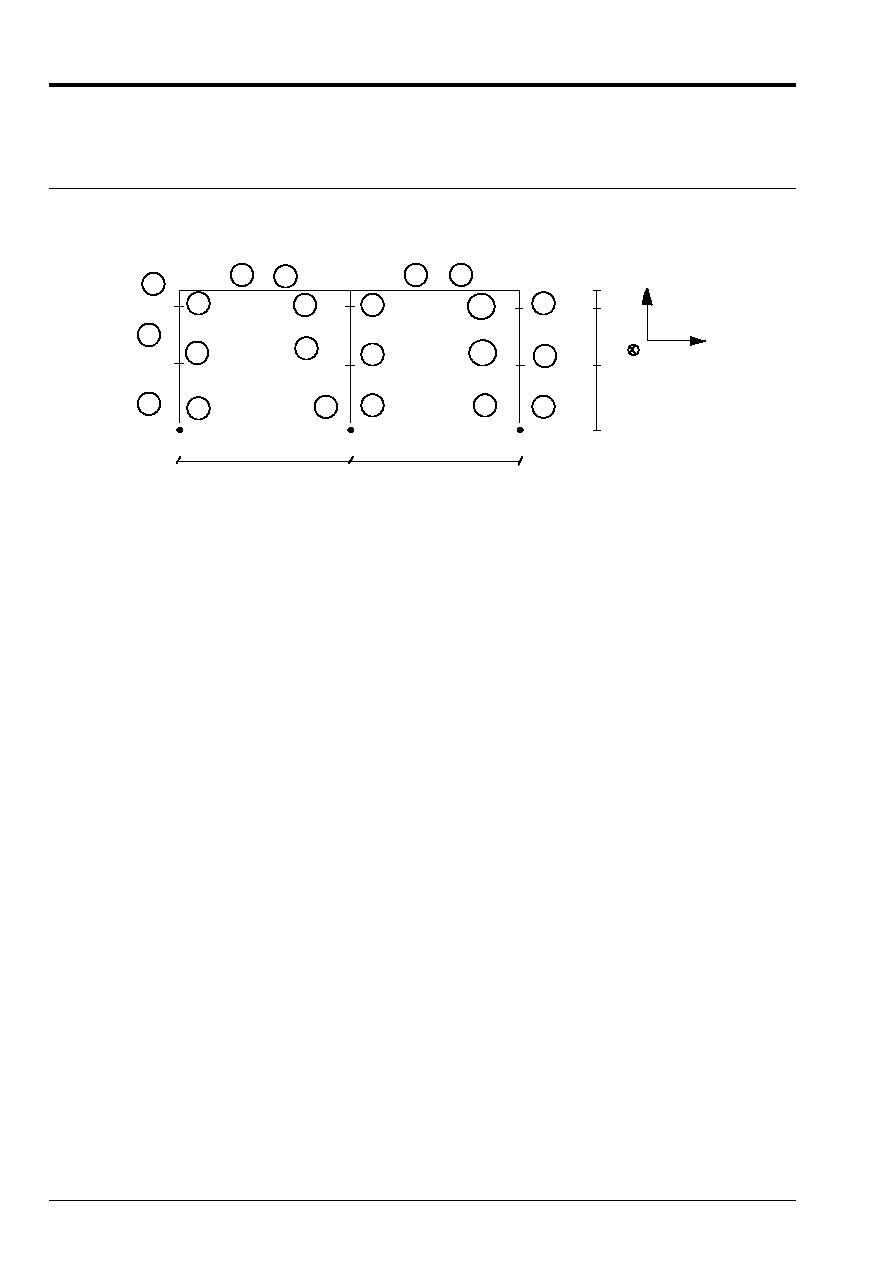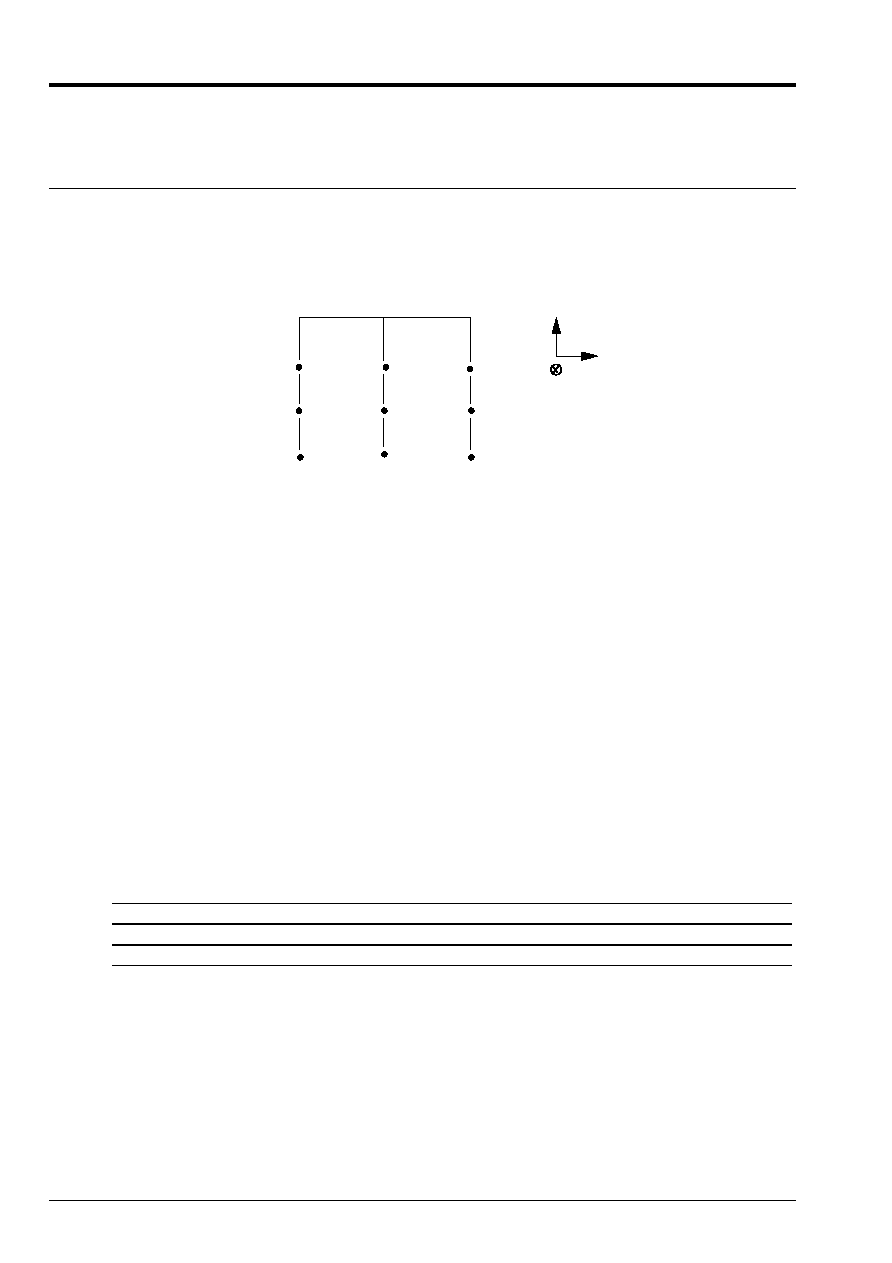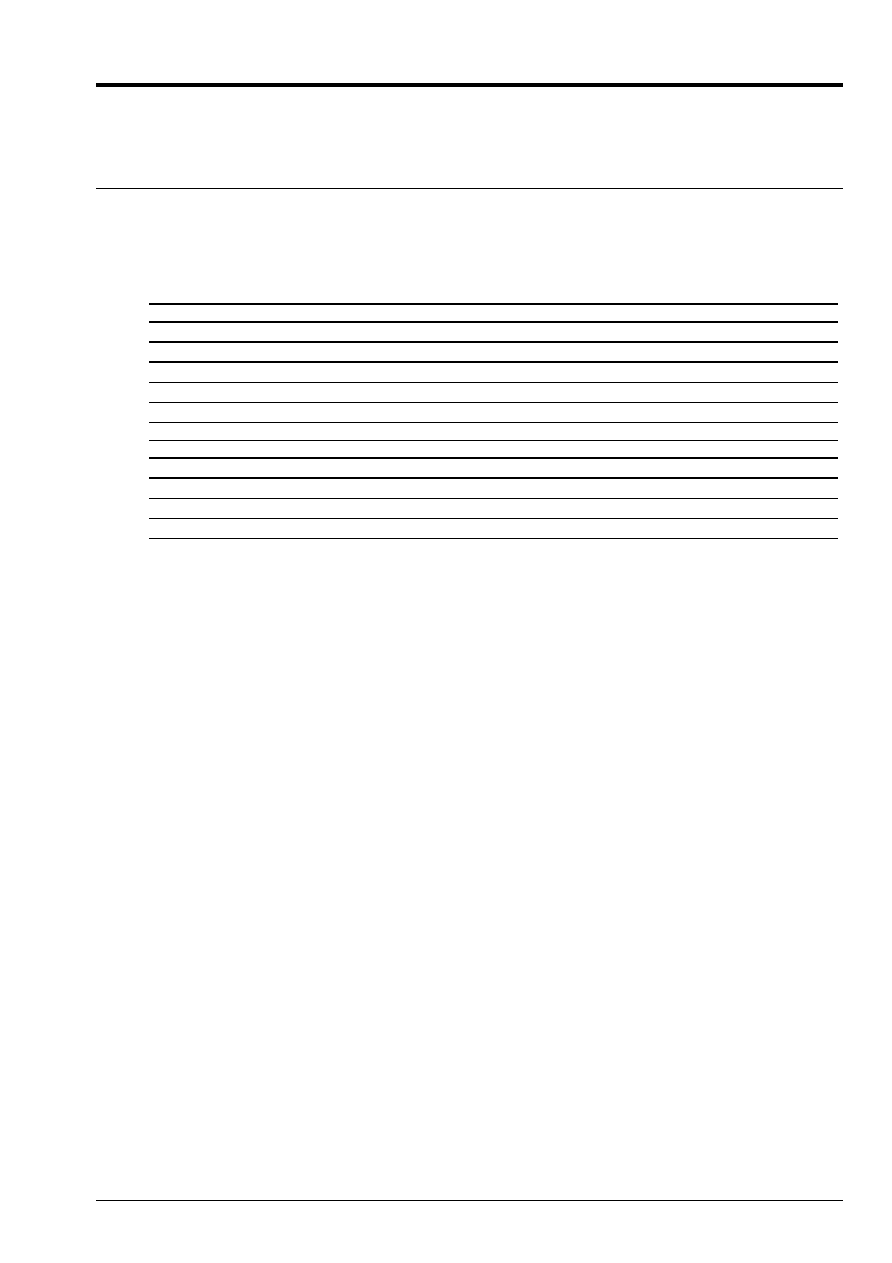
Code_Aster
®
Version
4.0
Titrate:
SDLL102 Gantry subjected to forces electrodynamics
Date:
06/03/98
Author (S):
G. DEVESA
Key:
V2.02.102-B
Page:
1/6
Manual of Validation
V2.02 booklet: Linear dynamics of the beams
HI-75/96/051 - Ind A
Organization (S):
EDF/EP/AMV
Manual of Validation
V2.02 booklet: Linear mechanics
V2.02.102 document
SDLL102 - Gantry subjected to
electrodynamic forces
Summary:
This test is a three-dimensional problem of direct transitory dynamic calculation with forces distributed
of electrodynamic origin applied to a gantry (bars on 3 insulating columns of a post of
transformation).
This test was provided by the Center of Studies of the Grid system (EDF-DEPT). It was supplemented since by
a benchmark international bench starting from experimental measurements (results of several foreign codes):
test CIGRE-structure D.
It makes it possible to compare results of displacements compared to those obtained by other industrial codes
using a finished method finite elements or differences.
This test contains a modeling with elements of the type
SEG2
.

Code_Aster
®
Version
4.0
Titrate:
SDLL102 Gantry subjected to forces electrodynamics
Date:
06/03/98
Author (S):
G. DEVESA
Key:
V2.02.102-B
Page:
2/6
Manual of Validation
V2.02 booklet: Linear dynamics of the beams
HI-75/96/051 - Ind A
1
Problem of reference
1.1 Geometry
With
H
D
Z
X
Y
E
I
L
C
B
S3
S2
S1
S4
S6
S5
S7
M3
M2
G
F
M3
S9
S8
M1
M3
M2
M1
M3
S11
S10
K
J
M3
M2
M1
11.5
11.5
0.16
2.1
2.135
Cross sections of beams:
·
frame support
S1:
To = 1.2061 10
2
m
2
,
I
Z
=
2.3681 10
5
m
4
;
S5:
To = 1.4621 10
2
m
2
,
I
Z
=
2.8709 10
5
m
4
;
S9:
To = 1.5530 10
2
m
2
,
I
Z
=
3.0493 10
5
m
4
·
insulating columns
S2:
To = 3.1428 10
2
m
2
,
I
Z
=
4.5070 10
5
m
4
;
S6:
To = 3.2592 10
2
m
2
,
I
Z
=
4.6738 10
5
m
4
;
S10:
To = 3.3416 10
2
m
2
,
I
Z
=
4.7927 10
5
m
4
·
connections
S3, S11:
To = 3.1944 10
2
m
2
,
I
Z
=
1.15 10
5
m
4
;
S7:
To = 4.2130 10
2
m
2
,
I
Z
=
1.15 10
5
m
4
;
·
conductors
S4, S8:
circular R = 6.055 10
2
m
E = 6.2 10
3
m
1.2
Material properties
M1:
E = 2. 10
11
AP
= 8000 kg/m
3
(frame support)
M2:
E = 5. 10
10
AP
= 2500 kg/m
3
(insulating column)
M3:
E = 7. 10
10
AP
= 2700 kg/m
3
(connection and conducting aluminum)

Code_Aster
®
Version
4.0
Titrate:
SDLL102 Gantry subjected to forces electrodynamics
Date:
06/03/98
Author (S):
G. DEVESA
Key:
V2.02.102-B
Page:
3/6
Manual of Validation
V2.02 booklet: Linear dynamics of the beams
HI-75/96/051 - Ind A
1.3
Boundary conditions and loadings
Points A, E, I: embedding
Points D, L: not-continuity of U
X
,
y
,
Z
Forces of Laplace on conductors DH, HL;
·
two-phase current
=
= 100 m
·
infinite conductors separated from 1 m
(
)
(
)
I
I
T
E
EFF
T
=
+
-
-
2 cos
cos
/
I
EFF
effective intensity of the current
time-constant
·
two short-circuit with reset
T
0 < T ² 0.135
0.135 < T < 0.580
0.580 ² T ² 0.885
I
EFF
15.6 kA
0
15.6 kA
0.066 S
-
0.062 S
1.4 Conditions
initial
T = 0, speed and zero acceleration.
2
Reference solution
2.1
Method of calculation used for the reference solution
·
experimental measurements,
·
numerical methods D.F. or E.F.
2.2
Uncertainty on the solution
± 5 to 10% of dispersion of the computed values.
2.3 References
bibliographical
[1]
G. DEVESA: “Calculation of the electrodynamic strains on structures of conductors rigid
electric posts: establishment in the mechanical computer code
Aster
and Validation ".
Note HM-72/5904

Code_Aster
®
Version
4.0
Titrate:
SDLL102 Gantry subjected to forces electrodynamics
Date:
06/03/98
Author (S):
G. DEVESA
Key:
V2.02.102-B
Page:
4/6
Manual of Validation
V2.02 booklet: Linear dynamics of the beams
HI-75/96/051 - Ind A
3 Modeling
With
3.1
Characteristics of modeling
Modeling
POU_D_E
With
B
Z
X
y
I
E
C
F
G
J
K
H1 H2
L1
L2
D1
D2
Discretization:
·
elements AB, EFF, IJ: 10 meshs: SEG2
·
elements BC, FG, JK: 10 meshs: SEG2
·
elements CD1, GH1, KL1: 1 mesh: SEG2
·
elements D2H1, H2 L1: 30 meshs: SEG2
Dynamic evolution on 1s discretized in pitch of time of 5. 10
4
S with the algorithm of NEWMARK
(= 0.25 have, D = 0.5).
Storage of the results all the 20 pitches of time is 10
2
S.
3.2
Characteristics of the mesh
A number of nodes: 126
A number of meshs and types: 123 meshs SEG2
3.3 Functionalities
tested
Controls
Key word
Option
Keys
DEFI_FONC_ELEC
[U4.21.06]
AFFE_CHAR_MECA
FORCE_ELEC
[U4.25.01]
DYNA_LINE_TRAN
NEWMARK
[U4.54.01]
CALC_ELEM
EFGE_ELNO_DEPL
[U4.61.02]

Code_Aster
®
Version
4.0
Titrate:
SDLL102 Gantry subjected to forces electrodynamics
Date:
06/03/98
Author (S):
G. DEVESA
Key:
V2.02.102-B
Page:
5/6
Manual of Validation
V2.02 booklet: Linear dynamics of the beams
HI-75/96/051 - Ind A
4
Results of modeling A
4.1 Values
tested
Identification
Reference test
References
Aster
3.04.02
% difference
T = 0.12 S
U
y
in C2
60.49 mm
M
X
in S1
3140. Nm
3071. Nm
2.2
M
X
in S2
10150. Nm
9239. Nm
9.
M
X
in S3
3130. Nm
2916. Nm
6.8
M
Z
in C2
1431. Nm
1296. Nm
9.5
T = 0.70 S
U
y
in C2
11.891 cm
M
X
in S1
6080. Nm
6327. Nm
+4.
M
X
in S2
19670. Nm
18931. Nm
3.8
M
X
in S3
6060. Nm
6015. Nm
0.8
M
Z
in C2
2746. Nm
2647. Nm
3.6
Maximum obtained with T = 0.12 S (1st short-circuit) or T = 0.70 S (2nd short-circuit) or reset
(conformity test-calculation).
4.2 Remarks
The results obtained by ASTER are satisfactory compared to the other codes. They are almost
always lower than the measurements (effects of frames AB, EFF, IJ overestimated). The maximum ones are
chopped because of periodic storage.
Contents of the file results:
Displacements all 10
2
S and efforts in the elements at times T = 0.12 S, T = 0.27 S, T = 0.70 S.
4.3 Parameters
of execution
Version: 3.04.12
Machine: CRAY C90
UNICOS 8.0
Overall dimension memory:
8 megawords
Time CPU To use:
74.19 seconds

Code_Aster
®
Version
4.0
Titrate:
SDLL102 Gantry subjected to forces electrodynamics
Date:
06/03/98
Author (S):
G. DEVESA
Key:
V2.02.102-B
Page:
6/6
Manual of Validation
V2.02 booklet: Linear dynamics of the beams
HI-75/96/051 - Ind A
5
Summary of the results
The results are acceptable compared to the test results and locate values produced by
Code_Aster
in good place among ten results of other software.
The values of reference of the file of test are those of version 3.04.02 of the code (not regression).





